Pictorial Tour of Martello24
NB Text from England Heritage Guide to Martello Tower No. 24, photos Friends of Martello24
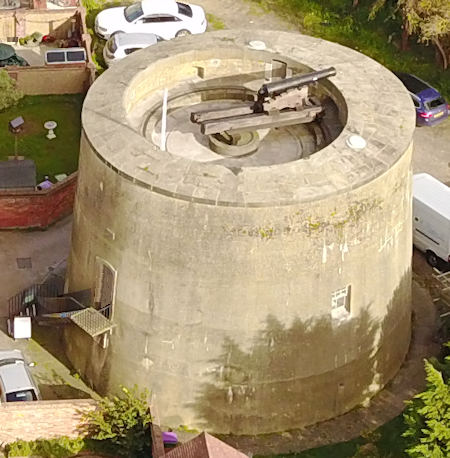
Martello Tower No.24
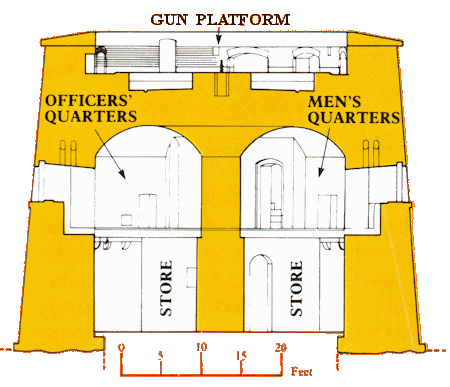
Overall Plan of Martello Tower
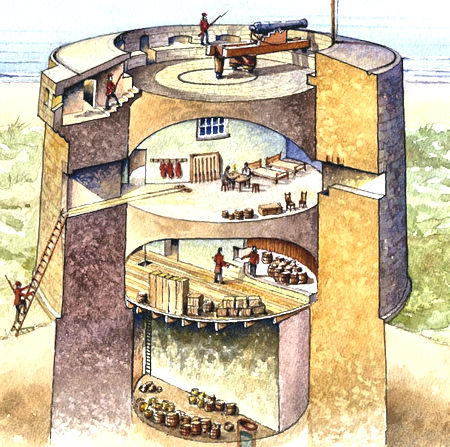
Artist's Impression of a Martello Tower
Introduction and Entrance ![]() top of page
top of page
The majority of Martellos were built on comparatively lonely and remote areas of the coast; in contrast, Martello Tower No. 24 and its immediate neighbours at Dymchurch had to be fitted in among the existing cottages and gardens of the village.
The only access to the tower is through the first-floor doorway, placed there for defensive reasons. The stairs are modern; originally there would have been a ladder, taken up as necessary and stored within the tower. The chamfered stone guide (chute) for the ladder can be seen beneath the modern landing.
Most Martello Towers had just three levels: the fighting platform on the roof, the first floor where the garrison lived and the basement used for storage of ammunition and supplies. However, some had extra storage place under the ground floor and a water sump fed from internal ducts from the tower roof.
When the Ministry of Works acquired the tower in 1959, most of the timber work was rotten and had to be replaced. However, sufficient partitions remained here and in the adjacent Martello Tower No. 23 to allow accurate restoration. It is possible that the design of these partitions and their positions reflect refurbishment works for which tenders were submitted in 1853, but, if so, it is unlikely that they differ significantly from the 1804 layout.
Through the heavy front door leads Inside the entrance to a vestibule with a trap-door to the basement. The trap door is now protected by wooden fencing for safety reasons. Above the trap door is a metal ring set in the vault which was used for a rope for hauling gunpowder and stores up from the outside and then down the trap door to the basement.
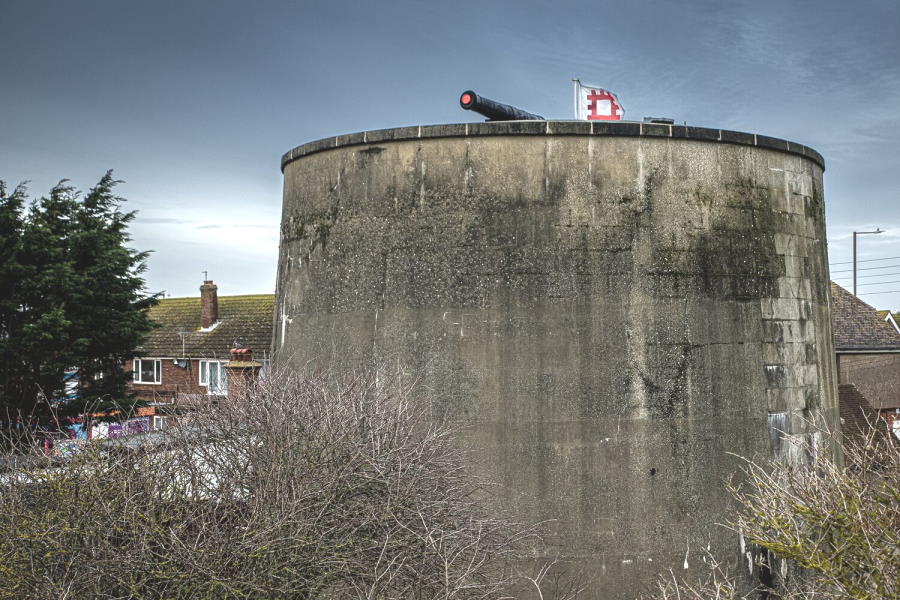
Martello Tower No.24 viewed from the sea
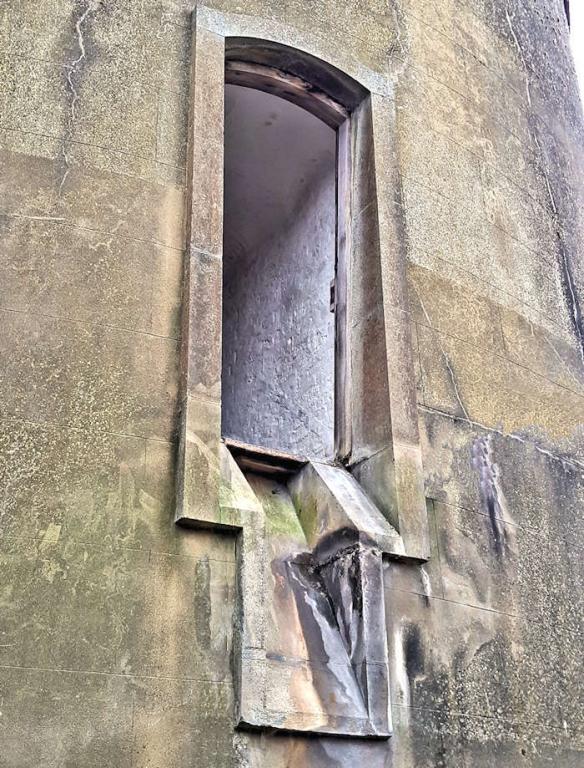
First Floor Entrance and Ladder Chute
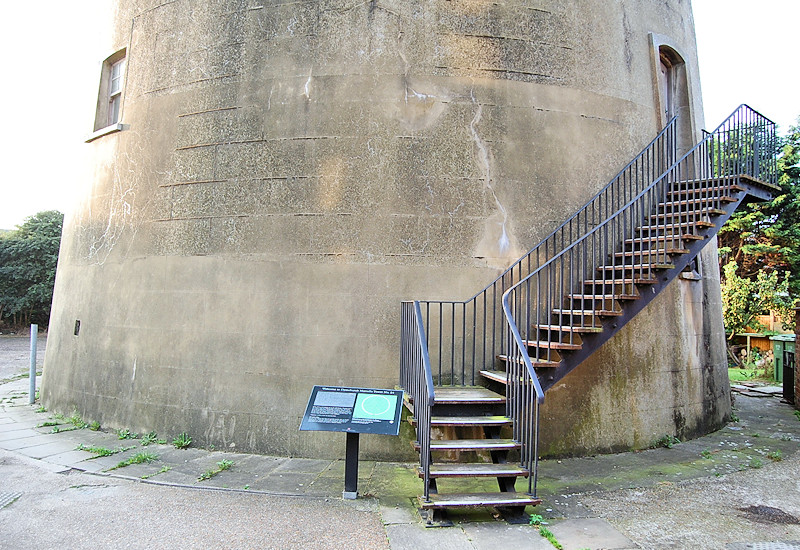
External Staircase Today
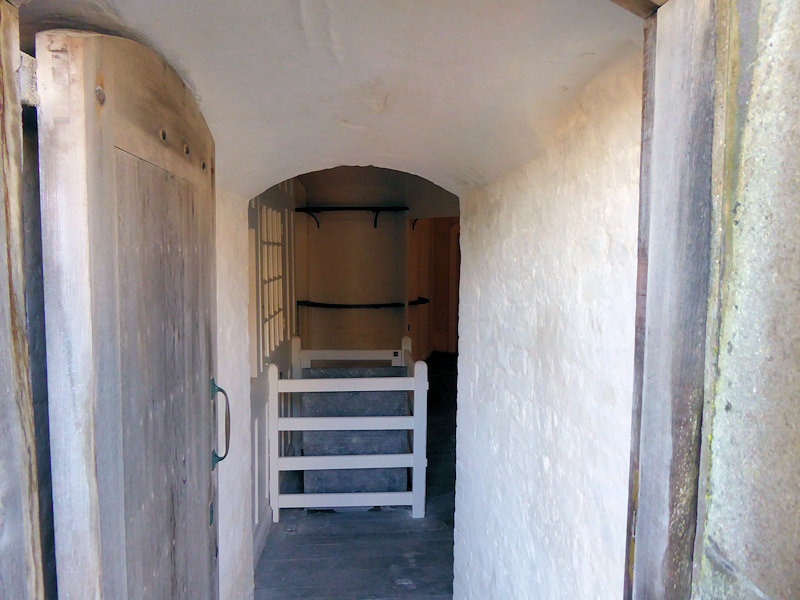
Entrance into the Vestibule
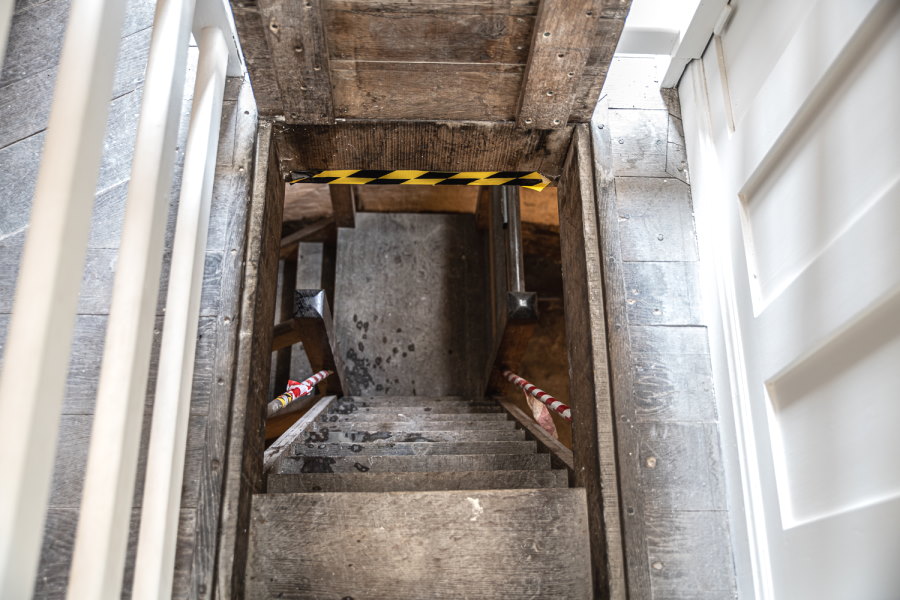
Trapdoor to the Basement
First Floor ![]() top of page
top of page
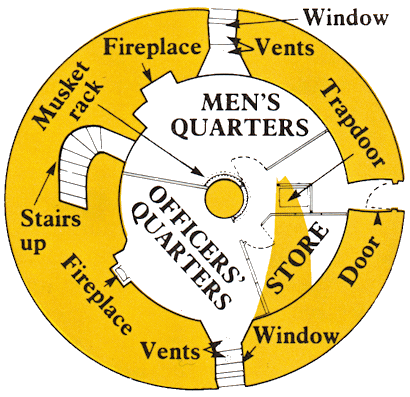
Plan of the First Floor
Immediately in front of the entrance is the central brick column supporting the vault; around the column is a rack that once held flintlock muskets, the main weapon of the British army from the 1730s to the 1830s. The muskets here would probably have been the cheaper `India Pattern' type, made in large numbers by the East India Company for its own armies, but purchased by the Board of Ordnance to supplement its own production and purchases of the famous Brown Bess muskets. The latter were reserved for British regular troops.
To the left of the entrance is a small room which was once a store-room. Beyond it was the room used by the officer in charge of the Martello; this had its own window and fireplace. The circular vents above the window lead up to the parapet and were designed to dissipate musket smoke in times of siege.
The remaining space on this floor was allocated to the 24-man garrison. The one room forming the garrison quarters has a window and fireplace, while on the southern side a staircase in the thickness of the wall leads to the roof.
The total floor area allocated to the 24 men was only marginally larger than that for their commanding officer, eloquent testimony to the privileges of rank in the Georgian army. In this room is a bust of William Hobson, the principal building contractor.
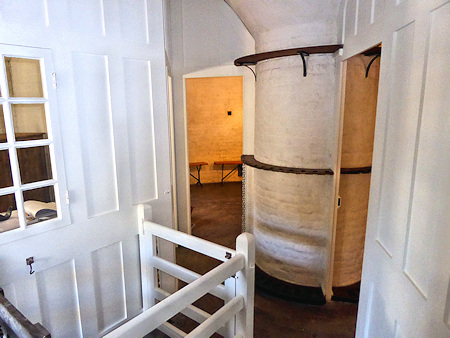
Vestibule with the entrance to the
storeroom (left), Officer's room (centre)
and the Soldiers room (right)
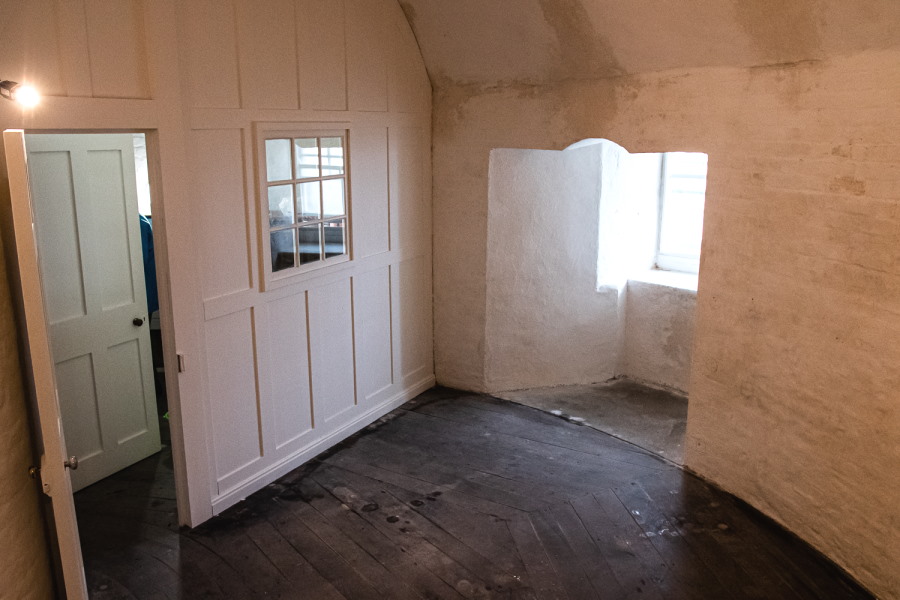
Officer's Room
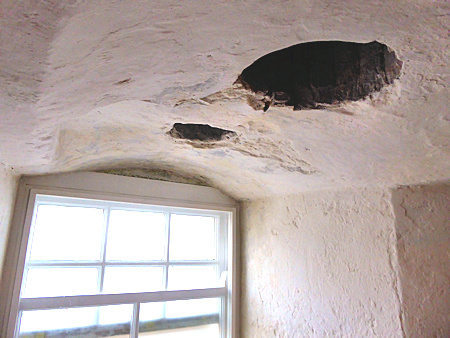
Smoke Holes/Vents
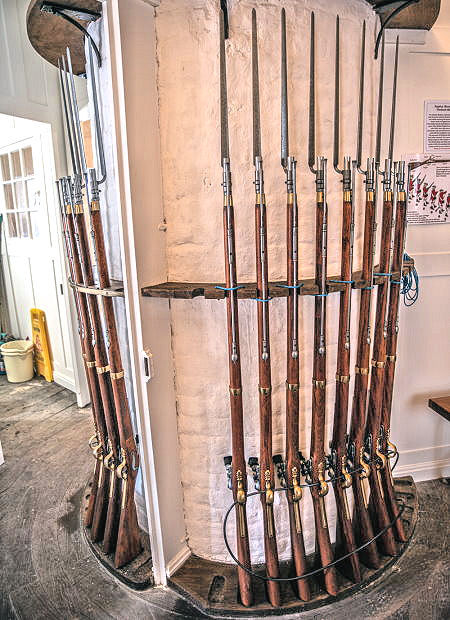
Central Column with 'Brown Bess' Muskets
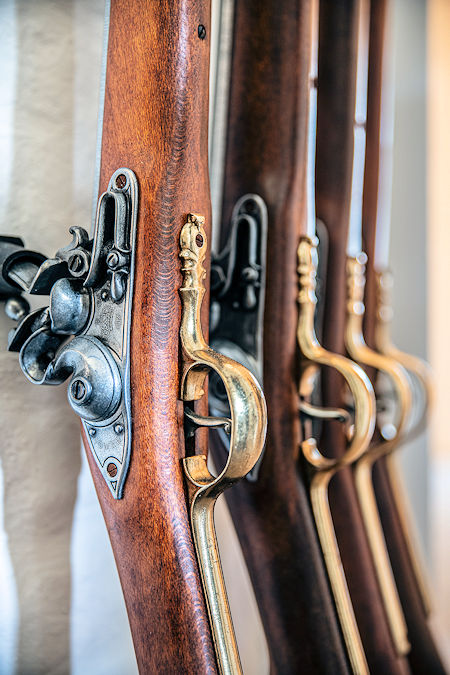
Muskets
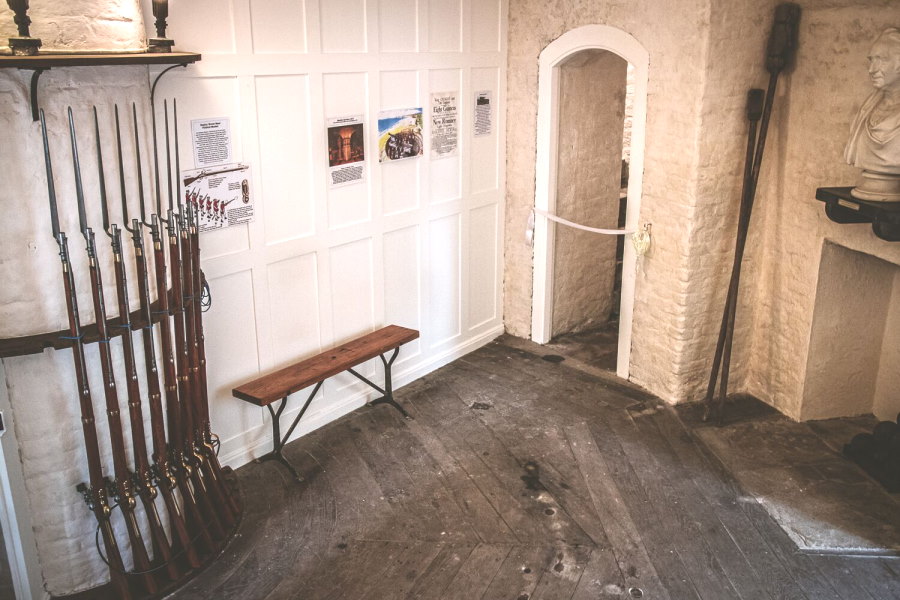
Soldiers room, showing staircase to the gun platform
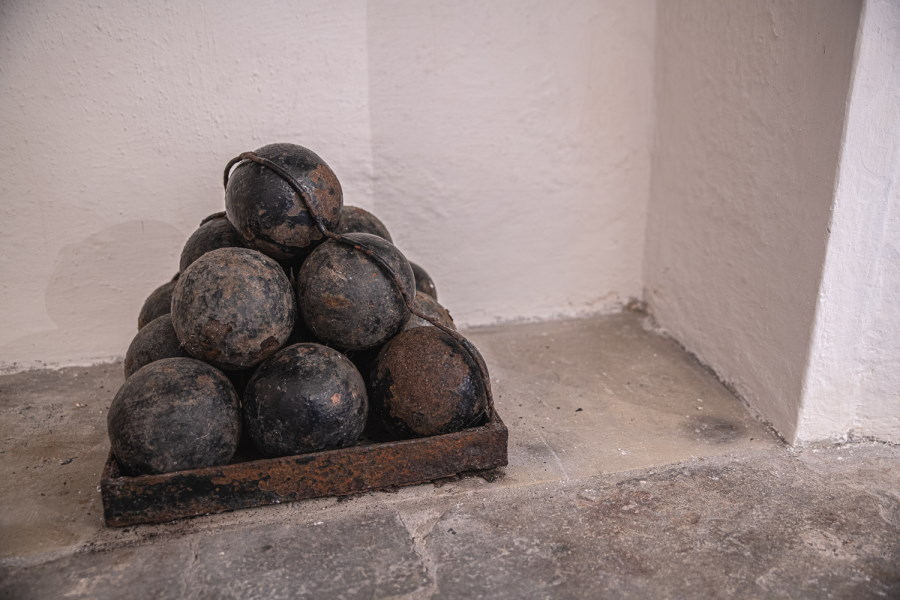
Stack of cannonballs in their 'monkey'
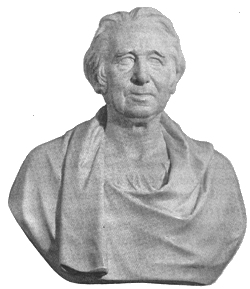
Bust of William Hobson who built many
of the South Coast Martello Towers
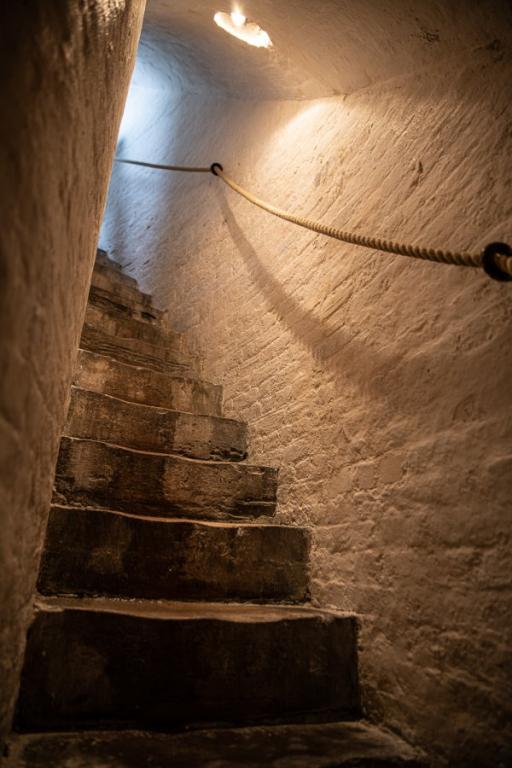
Staircase to the gun platform
Basement/Ground Floor ![]() top of page
top of page
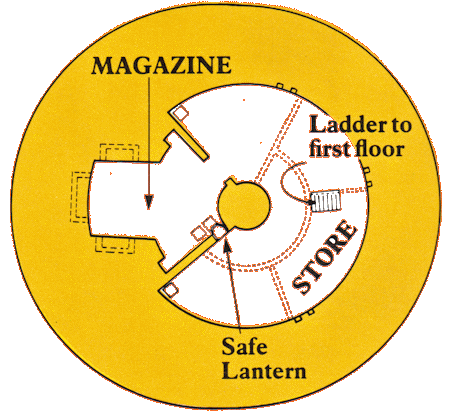
Plan of the Basement/Ground Floor
The basement is now approached by a steep staircase below the trapdoor. Down here the area was devoted to storage of garrison provisions and ammunition. On the south side, partly recessed into the thickness of the outer wall and with its own brick vault, is the gunpowder magazine. To keep the powder dry, the walls were built double-skinned with narrow ventilation slits. To avoid the danger of an explosion from sparks, the powder magazine was lit by a lantern separated from the magazine by glass.
Within the magazine are displayed modern replicas of the powder barrels; each barrel held 100 pounds of gunpowder. The cannonballs would have been stored in the main area of the basement.
At intervals in the floor of the basement can be seen drainage sumps. Originally these would have been covered by a timber floor. When properly stored and provisioned, this area of the Martello would have been full of barrels of various sizes containing water, salt beef, butter, cheese, bread and other foods, while wooden bins would have held coal for the fires. The absence of any permanent latrines in the towers would suggest that, in times of siege, elementary sanitary facilities would have had to be provided down here as well.
Given the close proximity of the village of Dymchurch, it may be doubted whether this and the neighbouring Martellos in practice ever kept much in the way of provisions, for the garrisons undoubtedly would have preferred to buy fresh produce locally.
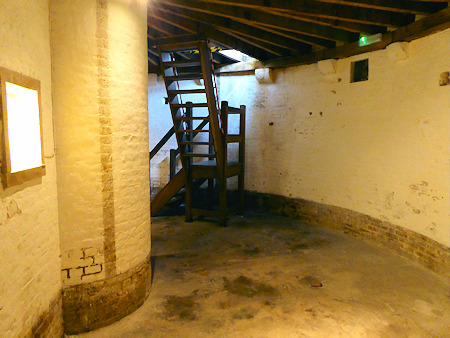
Stairs to the basement, accessed through
the trapdoor from the first floor.
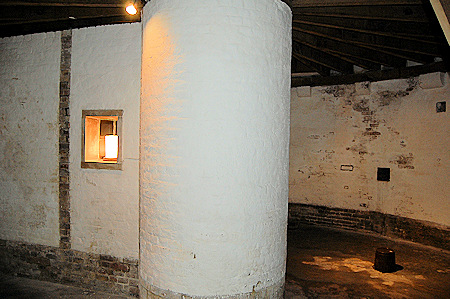
Basement showing the tower's central
pillar and the gunpowder store light
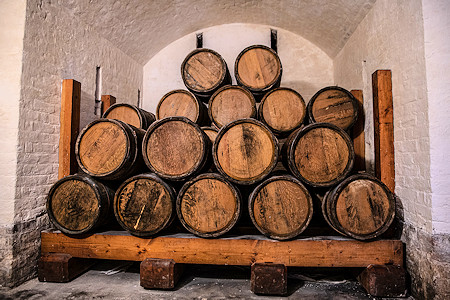
Gunpowder Store

Storage Area in the Basement/Ground Floor
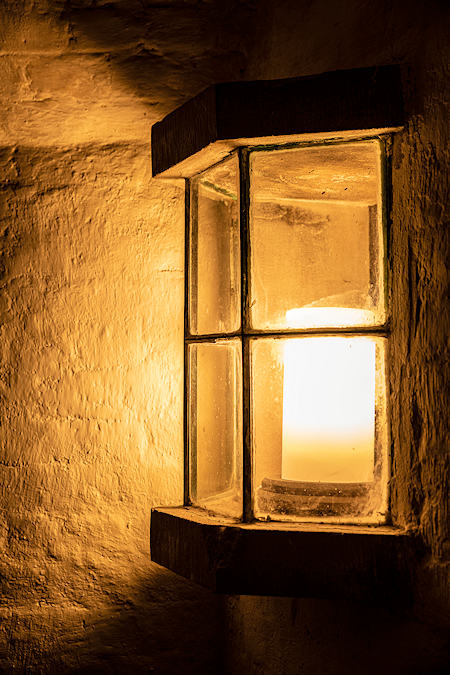
Gunpowder Store Safe Lantern
Gun Platform/Roof ![]() top of page
top of page
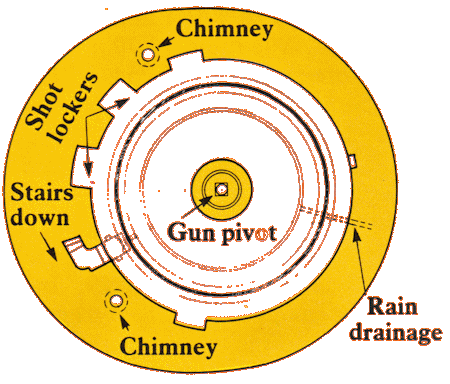
Plan of Gun Platform
The gun platform is reached by the stair from the first floor. This stair was carefully positioned in the thickest part of the tower wall and like the windows has vents in its vaulted roof to disperse gun smoke. The door at the top has a circular hole near its base for passing through ammunition to the gun. The gun platform is dominated by the 24 pounder gun on its traversing carriage which enabled the weapon to fire in any direction; the gun barrel is the original one supplied to this tower.
The letters WC cast into its trunnion or pivot identify it as a product of the famous gun founding firm of Samuel Walker & Co. This firm was established in 1741 at Grenoside near Sheffield but moved to Rotherham in 1746 and from the 1770s became one of the principal suppliers to the Board of Ordnance. On top of the barrel is the cipher of George III and to the rear is the touch hole. Degrees of elevation and depression to guide the gunlayer are incised on the base ring.
The traversing carriage is an accurate modern replica made in the Totnes gun workshop of English Heritage. It could be turned through 360 degrees with the aid of ropes threaded through the iron rings set in the wall of the parapet. Operating the gun required a detachment of ten to fourteen men; it had an effective range of approximately one mile.
The four recesses in the parapet wall were to store ammunition for immediate use; further supplies would have been passed up from the basement. Rainwater from the gun platform was piped into the sumps below the basement to supplement garrison supplies.
To the south east can be seen Martello Tower No. 25, its partner guarding the sluice. Although the village of Dymchurch still has a number of old buildings, those adjacent to the tower No. 24 are of more recent date.
However, the terrace of houses immediately to the east of the tower is a link with its later use. On its front, the stone plaque with the fouled anchor and the date 1905 shows that it was built as coastguard cottages by the Admiralty, responsible for the coastguard service from 1856 to 1923.
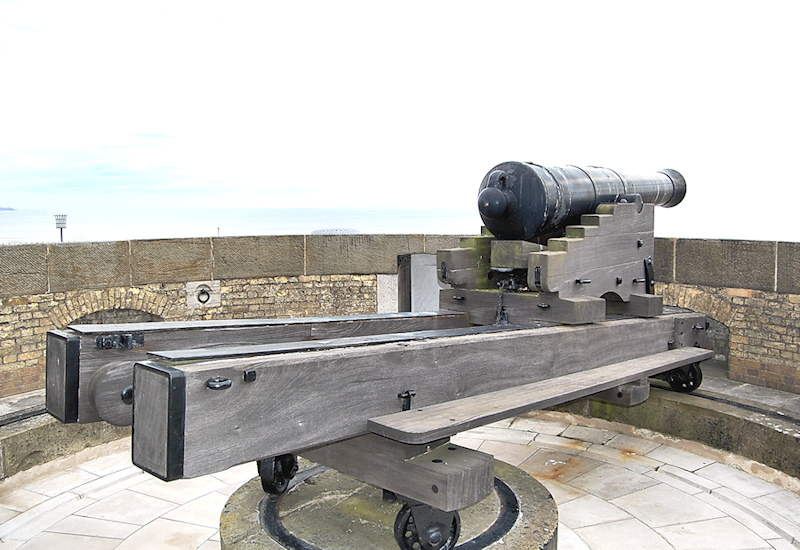
24 Pounder Cannon on a Traversing Carriage
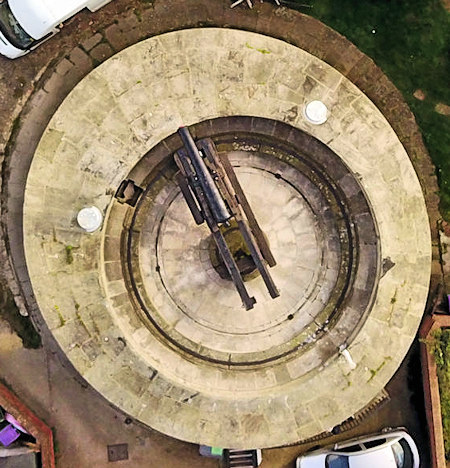
Gun Platform and Roof
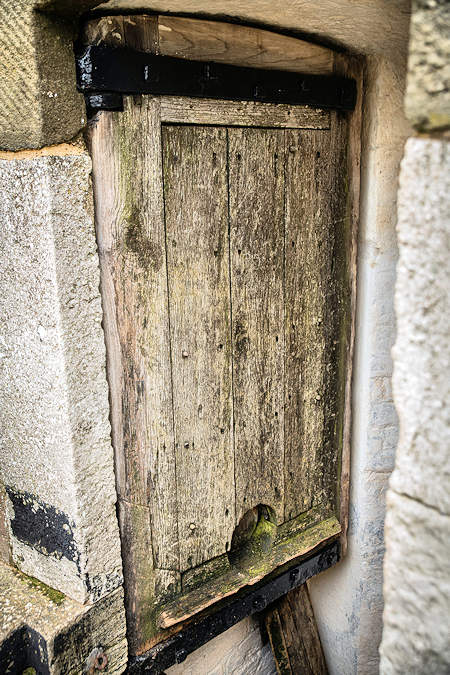
Door to the Gun Platform/Roof, with its hole for passing through ammunition
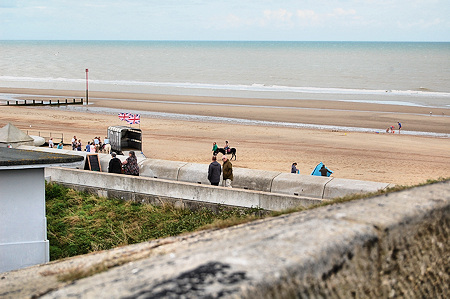
View from the Parapet
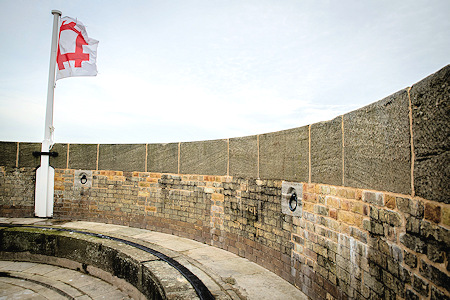
The Parapet
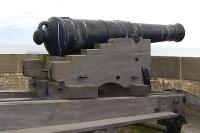
24 Pounder Cannon
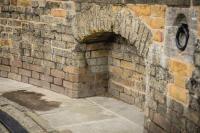
Cannonball store and iron ring
on inside the Parapet
For more pictures of Martello Tower No.24 please visit our Martello Tower No.24 Photo Galleries page


